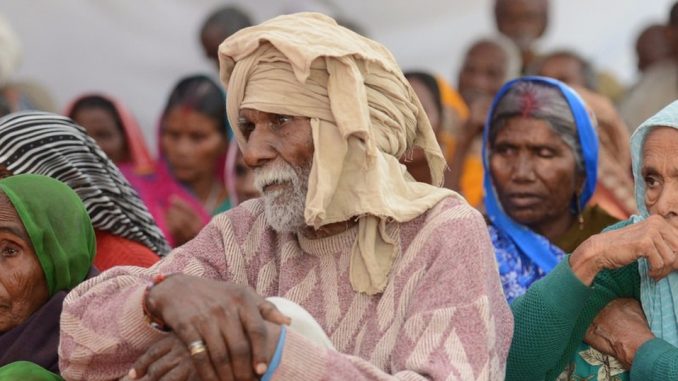
New Delhi: The Narendra Modi government is working on a plan to increase the pension it provides to people over the age of 60, widows, and disabled persons, all from so-called Below Poverty Line (BPL) households from the current Rs 200-1,000 a month to around Rs 1,600, with some of the increase coming from the states.
The pensions are all part of the National Social Assistance Programme, on which the Central government spent around Rs 9,300 crore in 2014-15; around 31 million people from poor households benefited from the schemes that year. The Union rural development ministry wants the Centre’s share to be at least Rs 1,000 a month in each case according to Amarjeet Sinha, the Union rural development secretary.
That represents a significant increase from the Rs 200 a month the Centre currently pays as pension to people between the ages of 60 and 79, widows between the ages of 40 and 59 (they become eligible for old age pension thereafter), and disabled persons under the age of 59 (they too become eligible for old age pension thereafter).
In the first case, the Centre doesn’t mandate a contribution from states, although many states do add something to the amount. In the second and third cases, it mandates an equal contribution from the states. “We may go for a matching grant in a 60:40 ratio between the Centre and the states,” added Sinha.
The rural development ministry is in talks with the finance ministry on the proposal.
States currently provide top-up doles to the Centre’s contribution. While some states like Delhi and Andhra Pradesh have substantially increased allocation in a bid to provide a respectable pension, in many states the pension amount remains miserably low.
There have been several protests in the past demanding an increase in the pensions. When Jairam Ramesh was the Union minister for rural development, he had described the stingy scheme as “an insult to dignity.”
The Centre also may go for identification of the beneficiaries through the 2011 Socio-Economic Caste Census data, which helped the government identify genuine beneficiaries in schemes such as Pradhan Mantri Ujjwala Yojana (which aims to provide subsidized cooking gas cylinders to beneficiaries) and Pradhan Mantri Aawas Yojna (which aims to provide housing).
The states currently draw up the list of beneficiaries, and the Centre will not find it easy to prune this list given the sensitive nature of Centre-state relations. “The list of BPL beneficiaries should remain decentralized. The states have always argued that the Centre’s faulty BPL list leaves behind millions of genuine needy people,” said senior Trinamool MP and former union minister Saugata Ray.
Currently, there are around 31 million NSAP beneficiaries of which only half have linked their accounts with Aadhaar.
In addition to the pension schemes, NSAP also provides 10 kg of free food grain to beneficiaries every month under the Annapurna scheme and provides Rs 200,000 as a one-time assistance, in case of death of the main wage earner of the family.
Source: Hindustan Times

Leave a Reply